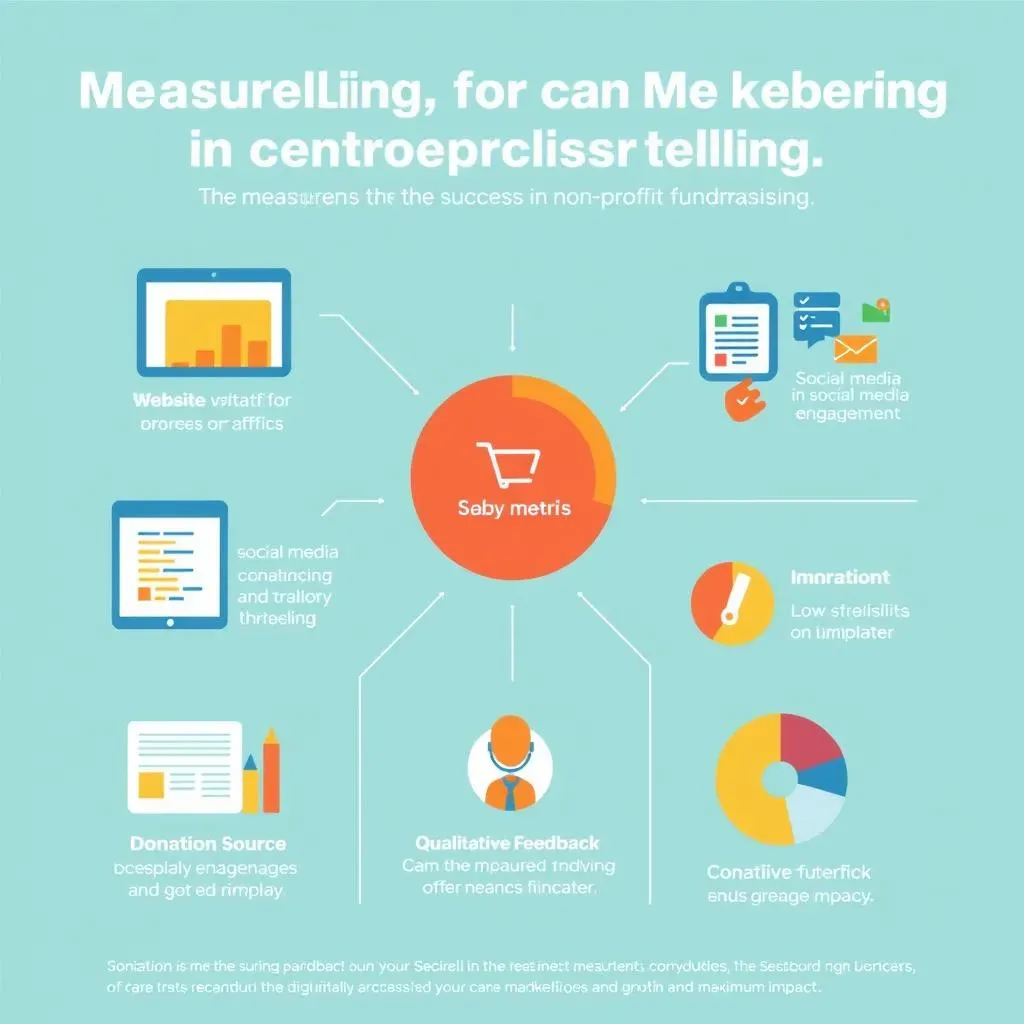Table of Contents
In today's competitive landscape, non-profits need every advantage to succeed in fundraising. One of the most powerful, yet often overlooked, tools is the art of storytelling. This article explores the crucial role of effective storytelling in non-profit fundraising, providing a practical guide to unlock its potential. We'll journey through the core principles of crafting compelling narratives, examining how to connect emotionally with your audience and inspire action. You'll discover how to leverage the power of visuals to amplify your message and make your stories unforgettable. We'll also delve into the practical aspects of measuring the impact of your storytelling efforts, ensuring your strategies are truly effective. By the end, you'll possess the knowledge and techniques to transform your fundraising approach using the power of "effective storytelling in non-profit fundraising," building stronger donor relationships and achieving greater success.
The Power of Narrative: Why Effective Storytelling Matters in NonProfit Fundraising

The Power of Narrative: Why Effective Storytelling Matters in NonProfit Fundraising
Beyond the Numbers: The Emotional Connection
Let's face it, cold, hard facts and figures about your non-profit's impact can only go so far. While crucial for transparency (check out our FAQ on non-profit fundraising compliance), they often fail to ignite the passion and empathy needed to inspire significant donations. People connect with stories. They remember stories. A compelling narrative about a single individual whose life was transformed by your organization's work is far more likely to resonate than a lengthy report detailing overall statistics. It's about painting a vivid picture, not just presenting a spreadsheet. Think of it like this: would you rather read a dry report on the effects of climate change, or hear the heartbreaking story of a family displaced by a devastating flood?
That's the power of narrative. It humanizes your mission, transforming abstract concepts into relatable experiences. A well-crafted story allows potential donors to step into the shoes of those you serve, fostering a personal connection that transcends mere financial transactions. It's about making donors feel *something*, whether it's hope, sadness, or determination. This emotional engagement is the key to unlocking deeper levels of generosity and building lasting relationships with your supporters. For more ideas on building those relationships, check out our guide on engaging donors.
Type of Story | Emotional Impact | Fundraising Potential |
|---|---|---|
Success Story | Hope, Inspiration | High |
Challenge Story | Empathy, Urgency | Medium-High |
Transformation Story | Hope, Gratitude | High |
Building Trust and Transparency Through Storytelling
Effective storytelling isn't just about tugging at heartstrings; it's also about building trust and transparency. In a world saturated with requests for donations, potential donors need to feel confident that their money will be used responsibly and effectively. A well-told story can showcase your organization's values, highlighting your commitment to accountability and impact. By sharing stories that demonstrate exactly how donations are used, you build confidence and credibility. For example, you could tell a story about a specific project funded by previous donations, showing tangible results and impacting individual lives. Consider including details like the number of people helped, the challenges overcome, and the positive changes achieved, all while maintaining a balance between impactful narratives and verifiable data.
Moreover, storytelling allows you to showcase the human side of your organization. Sharing stories about your staff, volunteers, or even board members helps to build a connection with your audience, humanizing your mission and making your organization feel more approachable. This personal touch can go a long way in fostering a sense of community and shared purpose, strengthening donor loyalty and increasing the likelihood of repeat donations. For inspiration, explore our collection of non-profit fundraising success stories.
- Showcase specific projects funded by donations.
- Highlight the positive impact on beneficiaries.
- Share stories of staff, volunteers, and beneficiaries.
- Demonstrate the organization's values and commitment.
Crafting Compelling Narratives: Techniques for Effective Storytelling in NonProfit Fundraising

Crafting Compelling Narratives: Techniques for Effective Storytelling in NonProfit Fundraising
Know Your Audience: Tailoring the Narrative
Before you even start crafting your story, you need to know *who* you're telling it to. Different audiences respond to different types of narratives. A young, tech-savvy donor might connect with a short, impactful video showcasing your work, while an older, more established donor might prefer a heartfelt letter detailing a specific success story. Understanding your audience's values, interests, and preferred communication styles is crucial to crafting a truly resonant narrative. Consider using data from previous campaigns to better understand your audience. What worked before? What didn't? This information can be invaluable in shaping your future storytelling efforts.
Think about the language you use, the tone you adopt, and the overall message you want to convey. Are you aiming for urgency, hope, or inspiration? The more you understand your audience, the better equipped you'll be to tailor your message for maximum impact. For more insights on connecting with donors, check out our article on donor engagement strategies.
- Research your target audience's demographics and interests.
- Analyze past campaign data to identify effective messaging.
- Adapt your storytelling style to resonate with specific audiences.
- Consider using A/B testing to compare different narrative approaches.
Structure is Key: The Narrative Arc
Every good story follows a basic structure—a beginning, a middle, and an end. This isn't just for fiction; it's crucial for effective non-profit storytelling as well. Your beginning should grab the reader's attention immediately, introducing the problem or challenge your organization addresses. The middle should develop the story, highlighting the impact of your work and showcasing the human element. Finally, your ending should leave a lasting impression, inspiring action and conveying a sense of hope or accomplishment. This structure provides a clear and engaging framework for your message, ensuring your story is both memorable and impactful.
Don't forget the power of a strong call to action! What do you want your audience to do after hearing your story? Donate? Volunteer? Share your message? Make your call to action clear, concise, and easy to follow. For example, include a direct link to your donation page or volunteer signup form. Remember, your story is only half the battle; you need to equip your readers with the tools to take the next step. Looking for more fundraising ideas? Our article on fundraising ideas for small non-profits offers a wealth of inspiration.
Show, Don't Tell: Using Visuals to Enhance Effective Storytelling in NonProfit Fundraising

Show, Don't Tell: Using Visuals to Enhance Effective Storytelling in NonProfit Fundraising
The Power of Pictures: Show, Don't Just Tell
So, you've got a fantastic story about how your non-profit helped a family rebuild their home after a devastating fire. But just writing about it isn't enough. Words alone can only go so far. That's where visuals come in. A single, powerful photograph of that family standing proudly in their newly rebuilt home speaks volumes. It evokes emotion, creates a connection, and makes your story instantly more relatable and memorable. Think about it – a picture is worth a thousand words, right? And in the world of non-profit fundraising, those thousand words can translate into thousands of dollars in donations. We've got some great tips on how to write a winning fundraising letter; check out our guide on writing effective fundraising letters.
Visuals aren't just about pretty pictures; they're a powerful tool for storytelling. They can show the impact of your work in a way that words simply can't. Think about using videos to showcase the faces and stories of the people your organization helps. Use compelling graphics to illustrate data points in your reports. Even something as simple as a map showing the geographic reach of your organization can tell a powerful story. The key is to choose visuals that are authentic, impactful, and emotionally resonant. Need some inspiration? Check out our post on non-profit fundraising success stories for examples of impactful visuals in action.
- High-quality photographs of beneficiaries and staff
- Short, impactful videos showcasing your work
- Infographics to present data in a visually appealing way
- Maps to illustrate your organization's reach
Measuring Success: Evaluating the Impact of Effective Storytelling in NonProfit Fundraising

Measuring Success: Evaluating the Impact of Effective Storytelling in NonProfit Fundraising
Tracking Key Metrics: What to Measure
So, you've poured your heart and soul into crafting compelling narratives for your non-profit. But how do you know if your storytelling efforts are actually paying off? The key is to track the right metrics. Don't just focus on overall fundraising totals; delve deeper to understand the specific impact of your storytelling campaigns. Start by tracking website traffic to pages featuring your stories. Are people engaging with your content? Are they spending time reading your stories or watching your videos? Also, pay attention to social media engagement. How many likes, shares, and comments are your stories receiving? Are people sharing them with their networks? These metrics provide valuable insights into the resonance of your narratives and the effectiveness of your storytelling approach.
Furthermore, consider tracking the source of your donations. Are more donations coming from individuals who have engaged with your stories? This data helps you establish a direct correlation between storytelling and fundraising success. You can also use A/B testing to compare different storytelling approaches. Try using different types of stories, different visuals, and different calls to action. This will help you identify the most effective techniques for your specific audience. For more detailed information on crafting effective fundraising strategies, consider reviewing our comprehensive guide on non-profit fundraising strategies.
Metric | Description | How to Track |
|---|---|---|
Website Traffic | Visits to pages with stories | Google Analytics |
Social Media Engagement | Likes, shares, comments | Social media analytics |
Donation Source | Tracking donations linked to stories | CRM software |
Analyzing Qualitative Data: Beyond the Numbers
While quantitative data provides valuable insights into the overall success of your storytelling campaigns, it's equally important to consider qualitative data. This involves analyzing feedback from your audience. What are people saying about your stories? Are they finding them engaging and inspiring? Are they sharing their own stories in response? You can gather this information through surveys, focus groups, or even simply by monitoring comments on your social media posts. This feedback is invaluable for refining your storytelling approach and ensuring your narratives resonate with your audience. It allows you to understand what's working and what's not, enabling you to continuously improve your storytelling techniques.
Consider conducting post-campaign surveys to gather feedback on the effectiveness of your stories. Ask questions about what aspects of the story resonated most with respondents, what emotions were evoked, and whether the story inspired them to take action. You can also analyze comments and testimonials from donors to gain a deeper understanding of how your stories are being received and perceived. Remember, qualitative data offers a richer, more nuanced understanding of the impact of your storytelling efforts, providing a more comprehensive picture of your success. For further tips on donor retention, check out our article on retaining donors.
- Conduct post-campaign surveys to gather feedback.
- Analyze comments and testimonials from donors.
- Monitor social media conversations about your stories.
- Conduct focus groups to gain deeper insights.
Adapting and Refining: An Iterative Process
Measuring the success of your storytelling is not a one-time event; it's an ongoing process of analysis, adaptation, and refinement. Regularly review your metrics and qualitative data to identify areas for improvement. What types of stories are resonating most with your audience? What changes can you make to improve the engagement and impact of your narratives? Perhaps you need to experiment with different storytelling formats, or maybe you need to focus on a different aspect of your organization's work. The key is to be flexible and willing to adapt your approach based on the data you collect.
Remember, effective storytelling in non-profit fundraising is an iterative process. By continuously monitoring your metrics, analyzing feedback, and adapting your strategies, you can maximize the impact of your narratives and achieve greater success in your fundraising efforts. Don't be afraid to experiment, and always keep your audience at the heart of your storytelling. For more ideas on adapting your fundraising strategy, we recommend checking out our article on non-profit fundraising trends.
